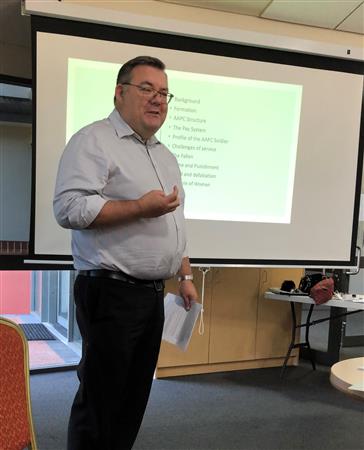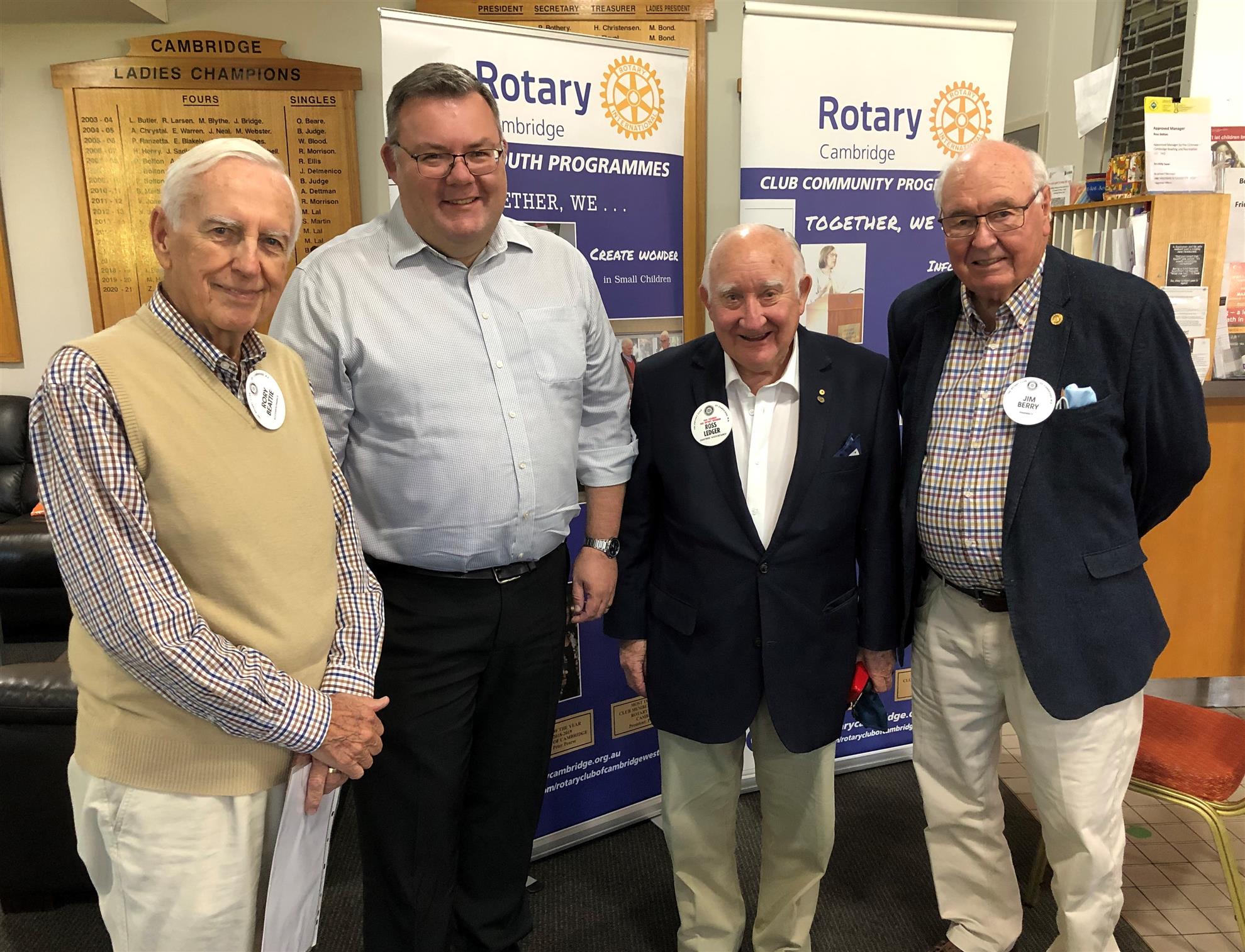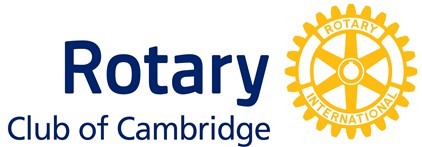

 Cate Barlow did the honours in the Induction Ceremony of former Melbourne Rotarian John Gartlan this week, and we are very happy to formally admit him and his wife Helen to our Club. Welcome to both of you!
Cate Barlow did the honours in the Induction Ceremony of former Melbourne Rotarian John Gartlan this week, and we are very happy to formally admit him and his wife Helen to our Club. Welcome to both of you!On the face of it the topic of Paymasters in WWI doesn’t hold much interest, but Brendan Cook changed all of that with fascinating details about what actually went on. He gave us the history of the Australian Army Pay Corp (AAPC) that operated during WWI, and interestingly it had its roots in the British system which goes back to the 16th Century. The individual pay books were introduced in 1815 and because they carried the fictitious name of Thomas Atkins in the instructions, the British soldiers became known as Tommies! Things developed in the pay system, but during the Boer War these improvements were reversed and the Commanding Officers landed up being responsible whilst at the same time deploying their troops as required! The AAPC was formed in September 1914, and paymasters were assigned to locations around the globe including Gallipoli. Australian soldiers were relatively well paid, and they received 5/- per day during training and 6/- per day in action. Of that 1/- was a deferred amount which they could take away when they left the army or their family received if they perished, and they could also allot another 2/- to family members to keep them going whilst the bread-winner was on active service. Soldiers were paid fortnightly and manual records had to be kept about all of this. The AAPC had 1151 men serving and they dealt with about 300,000 troops! Women also played a major role in the AAPC and there were about 1200 of them contributing to the well-being of our soldiers.
